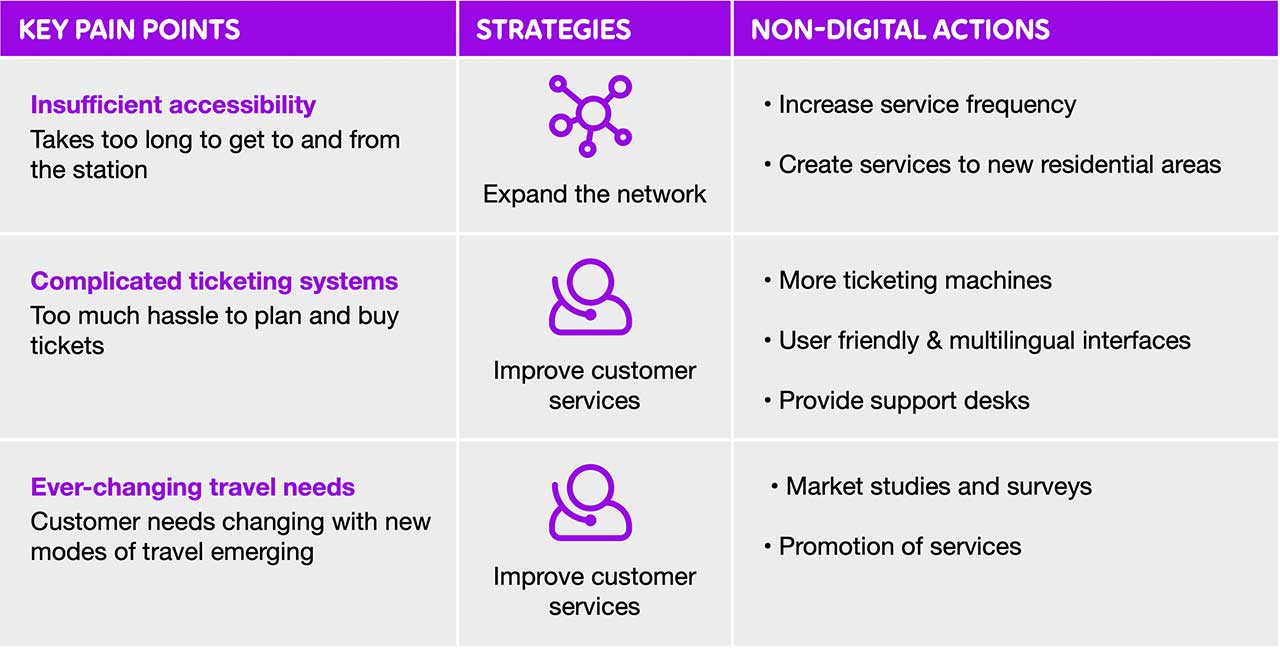Public Transport Pain Point 1: Attracting new passengers
In order to encourage people to choose public transport instead of taking the car, it needs to offer a convenient and easy-to-use alternative. This is an area that can be addressed at multiple levels from user experience up to the structure of the public transport network itself.
This is an extract from: Digitalization of Public Transport in the Nordics & Baltics. You can download the full report here
Perhaps most notably, our interviewees mentioned ticketing complexity. With an increasingly wide range of travel options – each with different prices, travel times and quality – it can be difficult for travelers to know they have chosen the best option. Even when ticketing machines are available, not everyone is comfortable using them. Instead, many rely on support desks for information and for buying tickets – a costly alternative to maintain.
Similarly, PTAs are unsure how to operate alongside the new options for the first and last mile. Understanding customer preferences and behavior in this increasingly dynamic ecosystem is a clear pain point. Interviewees found that traditional surveys or tap-on/tap-off data were no longer sufficient to achieve the granularity and accuracy they require.

DIGITAL SOLUTIONS TO ATTRACT NEW PASSENGERS
"Our analysis indicates that connecting the different parts of the transport ecosystem through Internet of Things (IoT) and increasing the availability and usability of data, the industry can increase ridership by 5-8 percent across the Nordics and Baltics".
These figure are based on full deployment of currently available IoT-enabled solutions across the public transport systems in the region.
REAL TIME PASSENGER INFORMATION
Providing up-to-the-minute bus timetable information removes unknowns for passengers, gives them greater perception of control, and enables them to manage their time. Data is sent from vehicles in motion and can be displayed in timetable apps and on digital displays at stations, stops and aboard vehicles.
CROWD MOVEMENT DATA
By analyzing the movement of mobile phones in a cellular network, it is possible to understand travel patterns – regardless of their mode of travel. This data, commonly referred to as crowd movement data, enable PTAs and PTOs to understand the first-and-last mile journeys of all potential passengers, find unmet needs and identify new routepossibilities.
SMART TICKETING PAYMENT SYSTEMS
While ticketing systems have developed from paper tickets to mobile applications, PTAs are still se- arching for the optimal ticketing solution – a solution that provides data to enable the improvement of services.
Traditional paper tickets provided very little data. The plastic cards that replaced them enabled PTAs to track passenger patterns, but created lock-in effects to ticketing system vendors. To avoid this dependency, most Nordic PTAs decided to develop their own mobile applications for ticketing. However, this led to higher costs and systems only working in limited areas.
Today, we are seeing a transition towards national ticketing systems in the Nordics, with evaluations currently underway in Sweden. Interviewees believe that future systems will be cloud-based and reliant on existing standards such as EMV (Euro- pay, Mastercard, Visa). Skånetrafiken was the first Nordic PTA to introduce such a system.
Cookie notification
Cookies allow us to optimize your use of our website. We also use third-parties cookies for advertising and analytics. Please read our Cookie Policy for more information.

